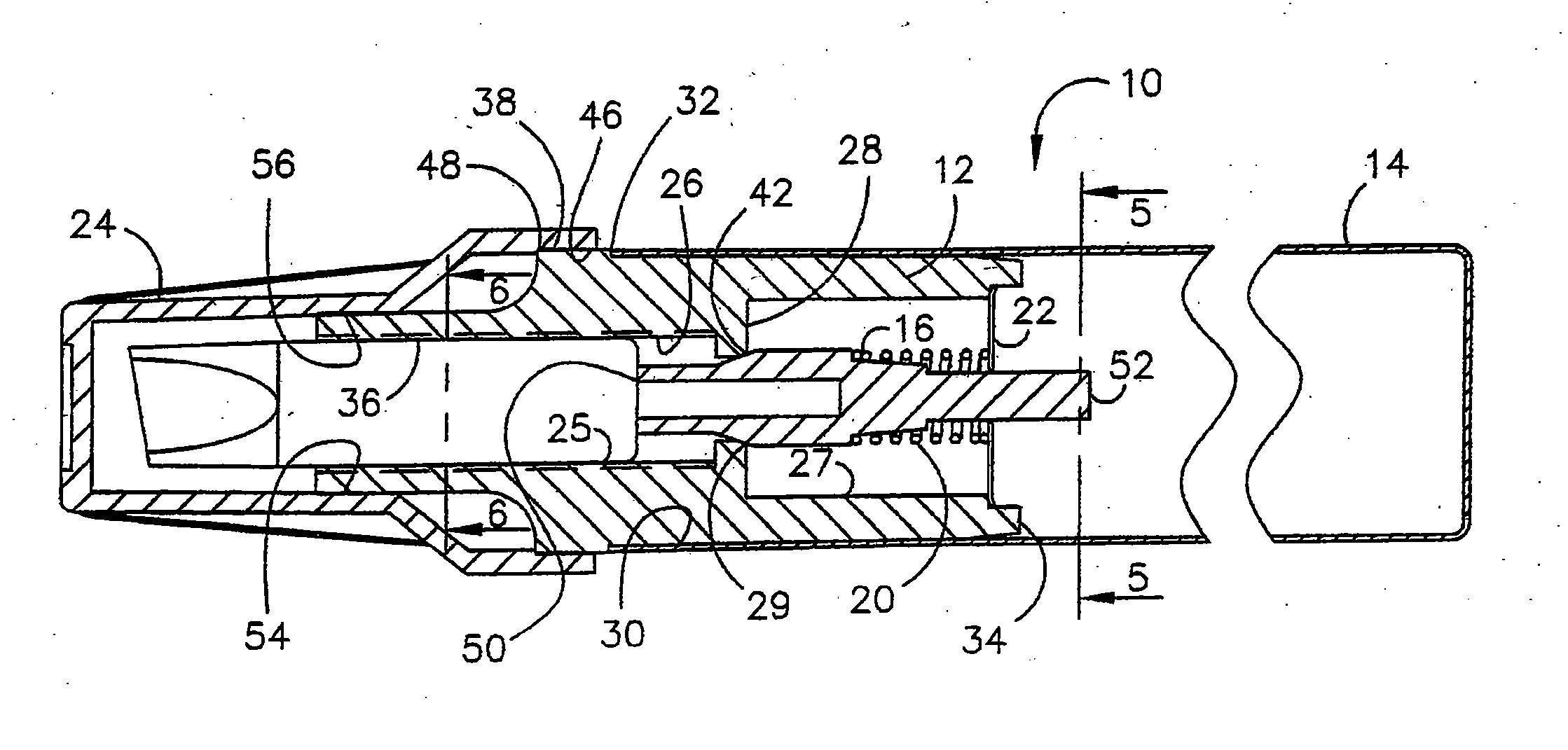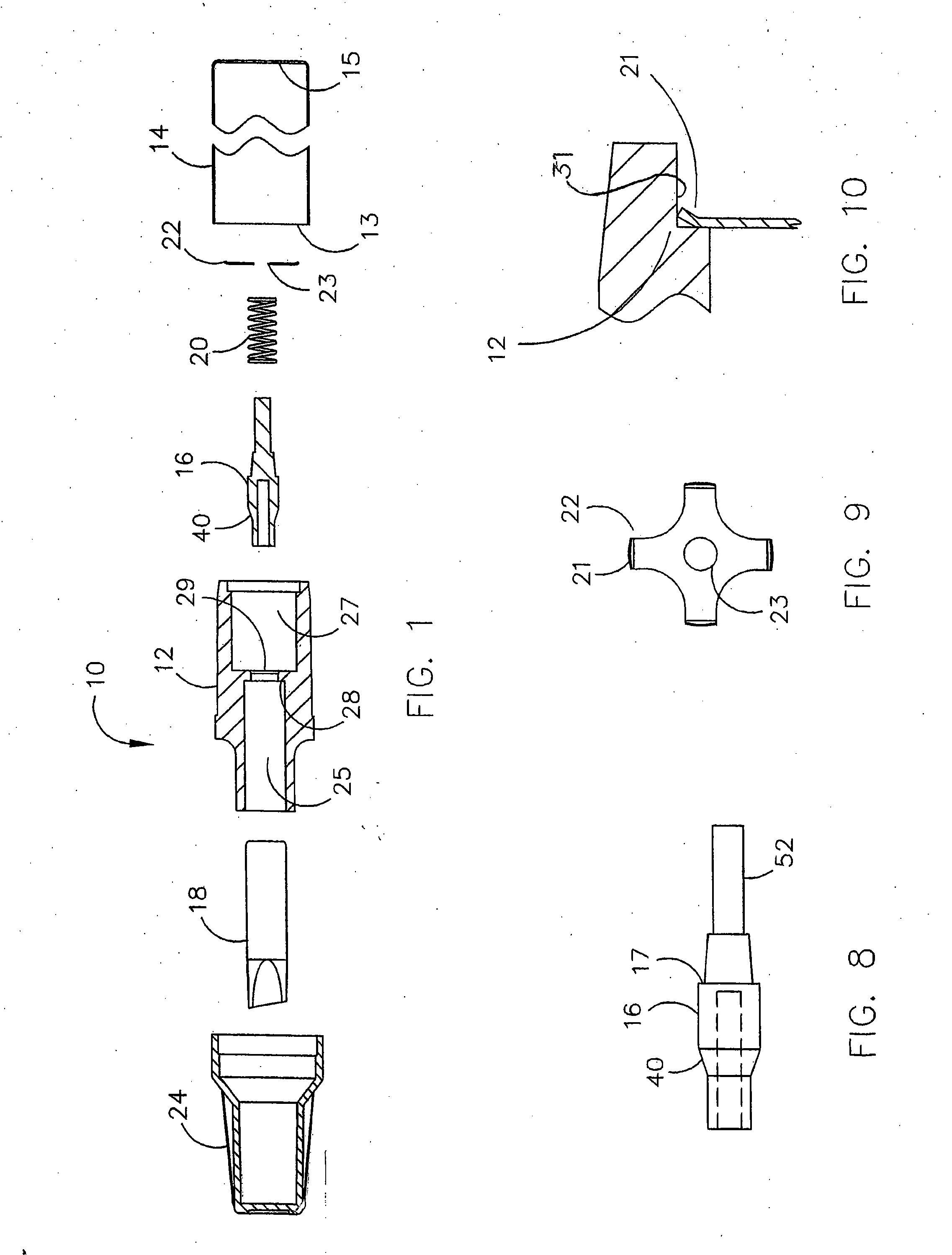Liquid applicator
- Summary
- Abstract
- Description
- Claims
- Application Information
AI Technical Summary
Benefits of technology
Problems solved by technology
Method used
Image
Examples
Embodiment Construction
[0034] Referring now by reference numerals to the drawings and first to FIG. lit will be understood that the liquid applicator 10 includes a unitarily formed, one-piece closure member 12 formed from hard plastic material such as acetal plastic which interfits the open end of a container 14. The container is a hollow cylinder having an open end 13 and a closed end 15 and is preferably of metal such as aluminum. Acetal plastic is impervious to most fluids and solvents.
[0035] The closure 12 includes a passage 26 therethrough having a partition or web 28 dividing the passage into first and second portions 25 and 27 communicating with each other by means of an opening 29. The opening 29 receives the front end of the valve element or plunger 16 in sliding relation and the socketed rear end of the closure 12 is provided with the fixedly attached retainer 22. A spring 20, constituting a bias means, is received on the rear end of the plunger 16 and engages the retainer 22. The front end of ...
PUM
 Login to View More
Login to View More Abstract
Description
Claims
Application Information
 Login to View More
Login to View More - R&D
- Intellectual Property
- Life Sciences
- Materials
- Tech Scout
- Unparalleled Data Quality
- Higher Quality Content
- 60% Fewer Hallucinations
Browse by: Latest US Patents, China's latest patents, Technical Efficacy Thesaurus, Application Domain, Technology Topic, Popular Technical Reports.
© 2025 PatSnap. All rights reserved.Legal|Privacy policy|Modern Slavery Act Transparency Statement|Sitemap|About US| Contact US: help@patsnap.com



